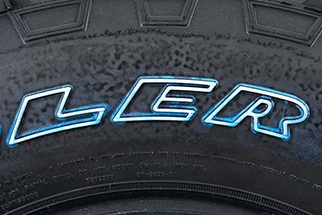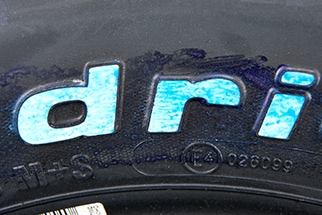White wall, outlined white letter and raised white letter tires all share a common manufacturing technique of adding a layer of white rubber on a stylized sidewall, strategically covered by a thin layer of non-staining black rubber to create the desired letter, stripe or effect. The tire’s rubber oils (conditioners, emollients and UV protectants, as well, if we’re being specific) are essential for many important characteristics, and are designed to migrate throughout the tire when it is in use. A byproduct of this natural migration is possible transfer between surfaces of touching tires when stacked for transport or storage. When stacking white accented sidewalls against another non-white accented tire’s sidewall, the issue becomes most apparent. While functionally this transfer is inconsequential, aesthetically it can become problematic by transferring a brown colored stain on what was originally a crisp white rubber letter or stripe. To help mitigate this transfer staining and protect against other dirt and grime encountered during shipment and subsequent storage, one of the last steps the manufacturer takes is to cover the white rubber accents with a temporary protective coating.
Typically, manufacturers apply a thin layer of blue tinted protectant localized to the white accents. Ideally the application is smooth and even, making its presence and purpose self-evident. However, sometimes applications can be less obvious and even cause customers to pause and question if there is a manufacturing issue with their new tire.
Similar to plastic films and coatings found on scratch-prone surfaces with many new products in the marketplace, the item may work just fine without removing the protective cover. However, removing the film reveals the true finish beneath. Similarly, white accent tires don’t necessarily need the protectant removed before putting the tire into service. In fact, many customers that choose to mount the optional black sidewall to the outside, simply mount the white accent to the inside without taking the time to clean it, with no negative side effects. Some owners simply don’t clean it off and find with time the protectant naturally comes off with the repeated deflection of the tire’s sidewall and the occasional car wash. However, for those excited to get the pop white accent tires are known for, a quick cleaning with a soft bristled brush, some mild dish soap, hot water and some elbow grease will reveal the bright white rubber beneath.






